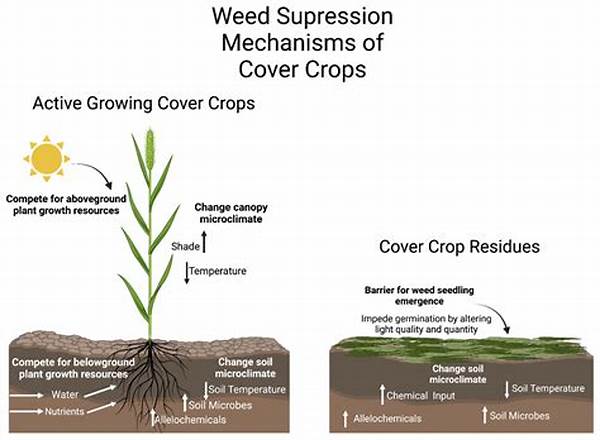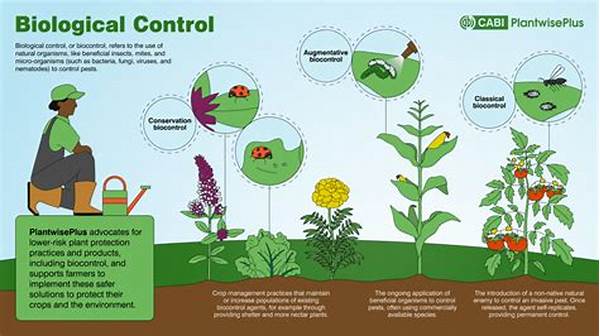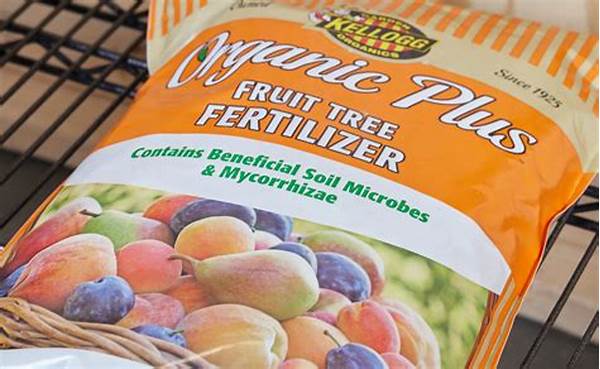Are pesky weeds undermining the productivity of your fields? Do you find yourself repeatedly battling against unwanted plants that rob your crops of essential nutrients and water? It’s time to adopt an enduring solution that not only manages weeds but also enriches the soil: cover crops for weed management. These natural warriors take on a pivotal role in suppressing weeds, creating a healthier and more productive agricultural environment. Transitioning to a sustainable crop management system has never been easier or more effective.
Read Now : Crop Rotation Pest Prevention
Why Cover Crops Make Sense for Weed Management
When it comes to effective weed control, cover crops for weed management are a reliable choice. Cover crops are grown not for harvest, but to cover the soil and improve its properties. They naturally smother weeds, depriving them of light and space, which are crucial for their growth. By doing so, they reduce the weed seed bank and prevent future infestations.
But that’s not all. Incorporating cover crops into your land management strategy builds soil fertility and structure. As they decompose, these plants enrich the ground with organic matter, enhancing the soil’s ability to retain water and nutrients. This results not only in healthier crops but in a more substantial yield. With cover crops, you’re not just managing weeds — you’re cultivating a thriving ecosystem.
Resilience against soil erosion is another significant benefit. The dense root systems of cover crops hold soil in place, reducing erosion caused by wind and water. This stabilizes the land, ensuring that your primary crops have a solid foundation from which they can draw all necessary nutrients. Cover crops for weed management act as both shield and sword, protecting your land and striking down invasive plants.
Diverse Options of Cover Crops for Weed Management
1. Clover Competence: Clover thrives in various climates and quickly covers the ground, outpacing weeds. By incorporating clover, you enhance nitrogen levels, crucial for crop health, while managing weeds effectively.
2. Radish Rescue: The deep roots of radishes break up compact soil, bring nutrients to the surface, and effectively smother weeds. A practical option for those prioritizing soil health alongside weed control.
3. Rye Ruggedness: Rye is known for its fast growth and ability to suppress weeds by blocking sunlight and nutrients. It’s particularly effective during cooler months for an extra layer of weed defense.
4. Buckwheat Brilliance: Fast-growing buckwheat excels in outpacing weeds and simultaneously attracting beneficial pollinators. It is ideal when a quick weed suppressor is needed in summer rotations.
5. Oat Offensive: Oats are excellent for trapping nutrients and suppressing weeds. This hardy crop also adapts easily to varying soil conditions, making it a versatile choice for many farmers.
The Mechanisms at Work in Cover Crops
Cover crops for weed management work their magic through several mechanisms. One powerful method is allelopathy, a process in which certain cover crops release chemicals that suppress or kill weed seeds and seedlings. Rye, for example, is renowned for its allelopathic properties, effectively reducing weed vigor. This built-in defense makes cover crops an organic herbicide alternative, minimizing the need for chemical interventions.
Furthermore, cover crops provide shade and block the sunlight, depriving weeds of the conditions they need to germinate and grow. This shading effect is particularly beneficial in pre-planting and post-harvest periods, where it keeps the land covered and free from weed invasions. By denying these opportunistic plants the basics of growth, cover crops successfully curb their development.
Benefits Beyond Weed Management
1. Soil Fertility Enhancement: Cover crops improve the soil’s nutrient profile through natural processes, reducing the need for synthetic fertilizers.
2. Water Retention: These crops enhance the soil’s moisture retention capacity, crucial for dry climates.
3. Biodiversity Boost: They foster a diverse ecosystem, promoting beneficial insects and organisms that contribute to overall agricultural health.
Read Now : Soil Enrichment For Fruit Production
4. Carbon Sequestration: Cover crops help combat climate change by capturing carbon dioxide from the atmosphere and storing it in the soil.
5. Pest Deterrence: Healthy soil and diverse planting can deter pests naturally, reducing the need for pesticides.
6. Reduced Soil Compaction: The root systems of cover crops improve the soil structure, allowing for better root penetration of successive crops.
7. Economic Savings: Reducing reliance on herbicides and fertilizers can lead to substantial financial savings over time.
8. Erosion Control: Protects against erosion by maintaining soil integrity, ensuring long-term land productivity.
9. Improved Aesthetics: Cover crops create a visually appealing green cover, enhancing the landscape’s appearance.
10. Resilience to Weather Extremes: By enhancing soil’s physical properties, they mitigate damage from weather extremes, such as heavy rains or droughts.
Implementing Cover Crops for a Sustainable Future
To fully harness the potential of cover crops for weed management, a structured approach is essential. Begin by selecting the right cover crop based on your climatic conditions, soil type, and specific weed challenges. Consider integrating a mix of cover crops to target multiple issues simultaneously, leveraging their diverse benefits for optimal land health.
Next, implement a rotation plan that aligns with your primary crop cycle. Timing is crucial; planting cover crops at the right time maximizes their impact on weed suppression and soil enhancement. Regularly monitor the growth and health of your cover crops, adjusting management practices as needed to adapt to changing conditions. With careful planning and execution, cover crops can transform your approach to weed management, fostering an environment where crops can thrive sustainably.
Conclusion: The Future of Farming with Cover Crops
Embracing cover crops for weed management is not just a trend but a revolutionary approach to modern farming. With each planting, you contribute to building healthier soil, enhancing biodiversity, and securing more robust yields. As the agricultural community continues to face challenges from climate change and dwindling resources, sustainable practices like using cover crops offer a beacon of hope.
Moreover, the financial and environmental benefits of cover cropping extend far beyond weed management. As more farmers adopt these strategies, we move closer to a future of resilient and sustainable agriculture. The choice is clear: with cover crops, you invest in the health of your farm and the planet, paving the way for a prosperous agricultural future.



